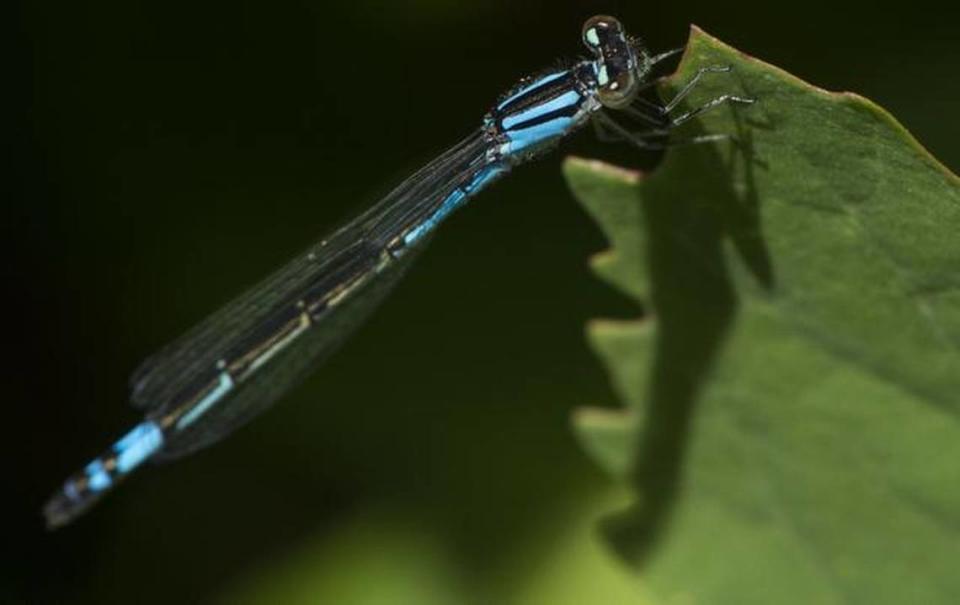Swarms of these predatory insects have been spotted in Wichita recently. What to know
Dragonflies are a common sight in late summer and early fall in Kansas, whether it be one or two of the creatures, or a whole swarm, as reported last week in and around Wichita.
The dragonfly is an insect predator. They do occasionally swarm, but if you run across a group, don’t be alarmed. Swarming can happen this time of year if a group of dragonflies goes in search of food after reaching the adult stage of development.
“It’s going to be after they’ve gone through their development in the water, and they come out as an adult .... That’s when you’ll see high number of dragonflies and even damselflies, flying around areas looking for food,” Raymond Cloyd, Ph.D. and entomology professor at Kansas State University, told The Eagle last week.
“Like a honey bee swarm or a swarm of locusts, you’ll see quite a few of them come out during certain times of the year,” Cloyd said of dragonflies.
You’re lucky if you catch sight of a swarm, however. In Cloyd’s experience, seeing single or paired dragonflies is the most common occurrence.
“Most of my instances are seeing one or two dragonflies, I have not really in my lifetime seen a swarm of dragonflies,” Cloyd said.
What to know about the dragonfly in Kansas
The common dragonfly, scientific name Anisoptera, starts its life in water.
“The eggs are laid and, you know ... the aquatic insects are in the water for a long period of time,” Cloyd said. “Then they crawl up to a stem or some type of plant that’s near the water. They will then ... undergo what we call ‘incomplete metamorphosis’ because there’s no pupil stage.”
If you see dragonfly skins around the water, that’s where the adult dragonflies have shed their exterior, Cloyd said.
According to the Great Plains Nature Center, there are seven types of dragonflies in Kansas. They are petaltails, darners, clubtails, spiketails, cruisers, emeralds and skimmers.
The idea that dragonflies are only attracted to clean water and an indicator of aquatic health isn’t necessarily true, Cloyd said. Instead, most dragonflies will be attracted to still water.
“They’re pretty much attracted to mostly stagnant [water], not rivers or moving streams, but mostly, you know, lakes and ponds in areas where there’s minimal movement,” he said. “That’s where you’ll find most dragonflies, wetland areas that are undisturbed.”
In general, dragonflies are agile insects, Cloyd said, and they are voracious predators. The creatures feed off smaller insects in the area, which might be a plus if you’ve been plagued by pests this summer.
“They’ll feed on mosquitoes and other insects they can kind of grab. Some of them just kind of wait, or some of them will catch an insect in flight,” Cloyd said. “They’re very interesting insects.”

What’s the difference between damselflies and dragonflies?
Damselflies and dragonflies can often be confused with each other — and they’re both common in Kansas — but there are some tricks to tell them apart.
“The dragonflies tend to be larger than damselflies, but they both have aquatic life stages that are in the water,” Cloyd said.
Dragonflies tend to have larger and shorter bodies, while damselflies are known to be more slender.
Both flies have two sets of wings, which can prove to be confusing when trying to distinguish between them. Dragonflies have larger hindwings than forewings. Damselflies, however, have two sets of wings that are similar in shape and size.
To learn more about dragonflies and damselflies in the area, the Great Plains Nature Center has an online page with more facts about the two insects in Kansas.
According to the nature center, there are three kinds of damselflies in Kansas: the broad-winged damselflies, the spreadwing damselflies and the pond damsels.

